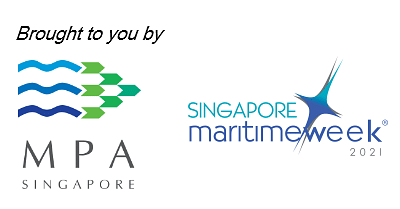BRANDED CONTENT
Maritime Singapore taking steps towards a greener maritime industry
A maritime decarbonisation centre and greener port operations are among plans being put in place to promote a more sustainable future for the maritime sector

The Pasir Panjang Terminal is among one of four container terminals operated by PSA Singapore that will be merged to form Tuas Port. The terminal also facilitated Asia’s first ship-to-container ship LNG bunkering operation in March, encouraging greater adoption of the fuel.
PHOTO: PSA CORPORATION LTD
Follow topic:
The Maritime and Port Authority of Singapore (MPA) has signed a memorandum of cooperation with six companies, namely BW Group, Sembcorp Marine, Eastern Pacific Shipping, Ocean Network Express, Foundation Det Norske Veritas and BHP, to establish a fund to set up a maritime decarbonisation centre in Singapore.
Under the partnership, each firm will contribute $10 million to support the centre and fund research and technology development projects to reduce the maritime industry's greenhouse gas emissions. MPA will contribute an additional $60 million, bringing the total to $120 million.
Sailing towards a greener future
The International Advisory Panel on Maritime Decarbonisation (IAP), convened last year by the Singapore Maritime Foundation with MPA's support, had recommended establishing the maritime decarbonisation centre in its report unveiled during the recent Singapore Maritime Week (SMW).

The IAP comprises 30 local and overseas leaders from shipping companies, port operators, class societies, insurance and finance players, energy companies, engine makers, shipyards, associations, academia and government.
The MPA also signed a memorandum of understanding with Temasek during the SMW to explore ways to accelerate the maritime industry's decarbonisation.
Ms Quah Ley Hoon, MPA's Chief Executive, said: "Maritime decarbonisation is a global challenge requiring a collective responsibility from all stakeholders involved. It is crucial to have strong public-private sector partnerships. We thank like-minded partners that have responded strongly to our call for collaboration. The agreements signed are two initial steps, which we hope will catalyse a larger, much needed momentum to make international shipping more sustainable."
Tuas Port: as exemplar of a sustainable hub port
Singapore is laying the groundwork for a more sustainable maritime industry in other ways.
When fully operational in the 2040s, Tuas Port is expected to be the world's largest fully automated container port in a single location. It will have a fleet of fully electric driverless automated guided vehicles and automated yard cranes. It will also have rail-mounted gantry cranes which are fully electric and use cameras and laser sensors for precision to allow crane specialists to remotely supervise multiple cranes.
The Just-in-time (JIT) Planning and Coordination System embedded within digitalPort@SGTM, Singapore's one-stop maritime single window, will reduce a vessel's stay in port. A shorter period of time spent in port will cut emissions in Singapore's port waters. Furthermore, the JIT system would also enable vessels calling at Singapore to plan their voyage ahead and optimise their sailing speeds, thus reducing their overall fuel consumption and emissions.
Tuas Port won in the "Community Outreach and Port City Dialogue: Port Development and License to Operate" category of last year's World Ports Sustainability Awards, organised by the International Association of Ports and Harbours.
Planning for a post-carbon Singapore
A consultation was launched at this year's SMW to help develop a Maritime Singapore Decarbonisation Blueprint 2050. The Blueprint will chart out decarbonisation strategies to mitigate Singapore's maritime transport emissions and reduce greenhouse gas emissions from international shipping.
In February, MPA joined an industry consortium "The Castor Initiative", that aims to commercialise an ammonia-fuelled tanker design. The consortium will be able to tap into MPA's experience as a bunkering hub to gather insights on safety issues and ammonia bunkering procedures.
Singapore is also enabling ships fuelled by liquefied natural gas (LNG) to be able to receive LNG in its port. In March, the Port of Singapore facilitated Asia's first ship-to-containership LNG bunkering operation, paving the way for greater adoption of the fuel.
As the guest-of-honour at the SMW's opening ceremony, Minister for Transport, Mr Ong Ye Kung noted: "With the launch of the Singapore Green Plan 2030 as a whole-of-nation effort for climate action, sustainable development and decarbonisation is now a national imperative.
"Maritime Singapore must contribute to the national and global sustainability agenda."
Missed out on SMW2021? Catch the action again at www.smw.sg/media-room/videos.



